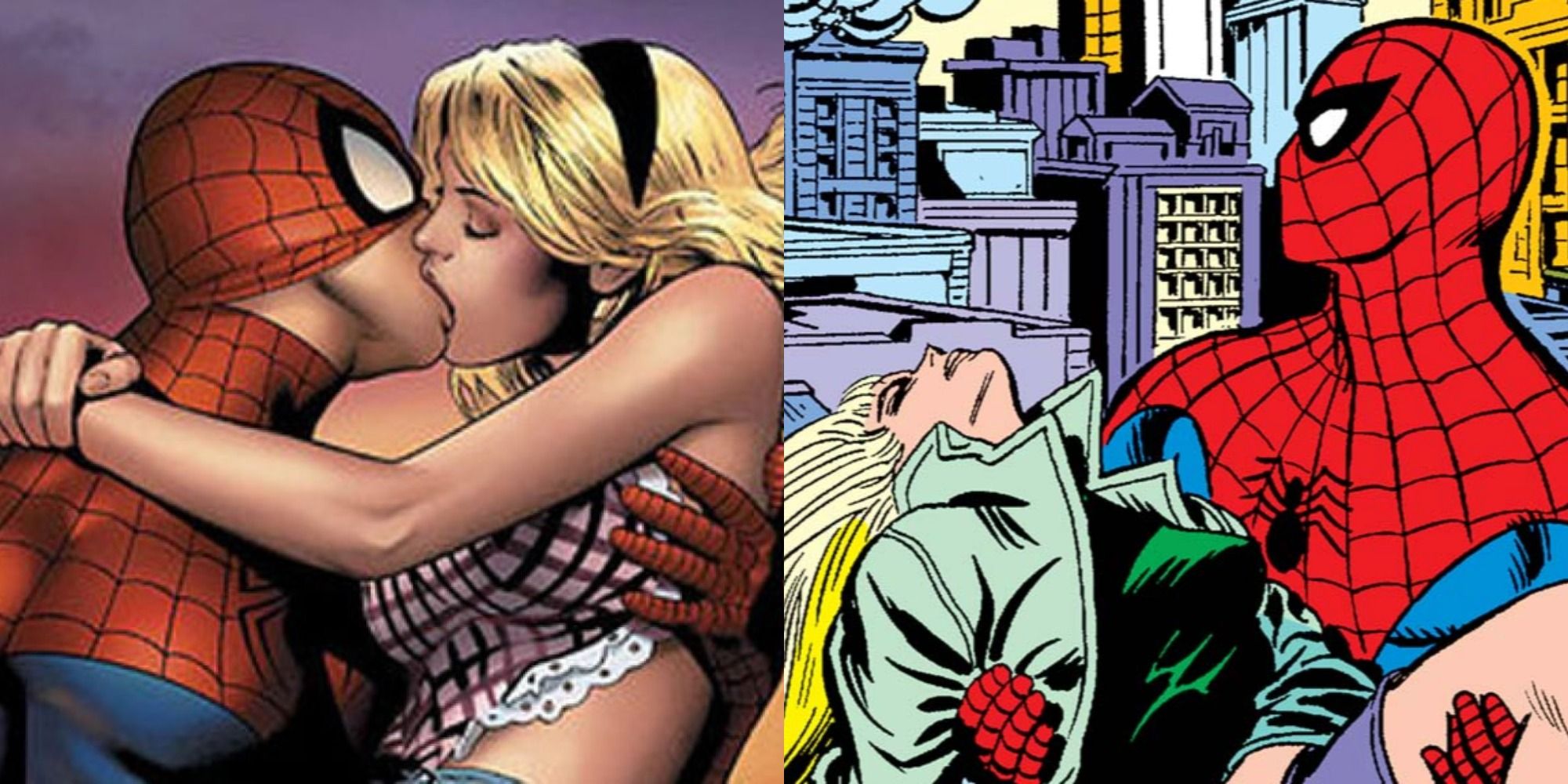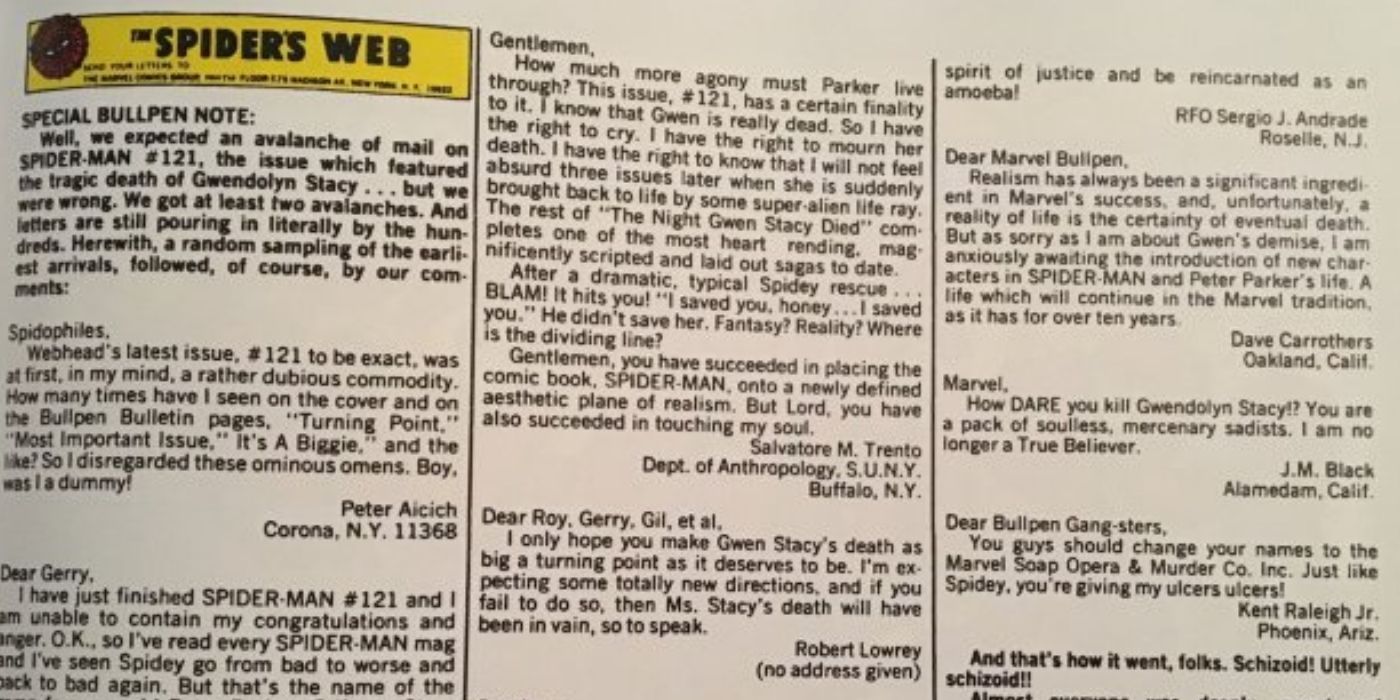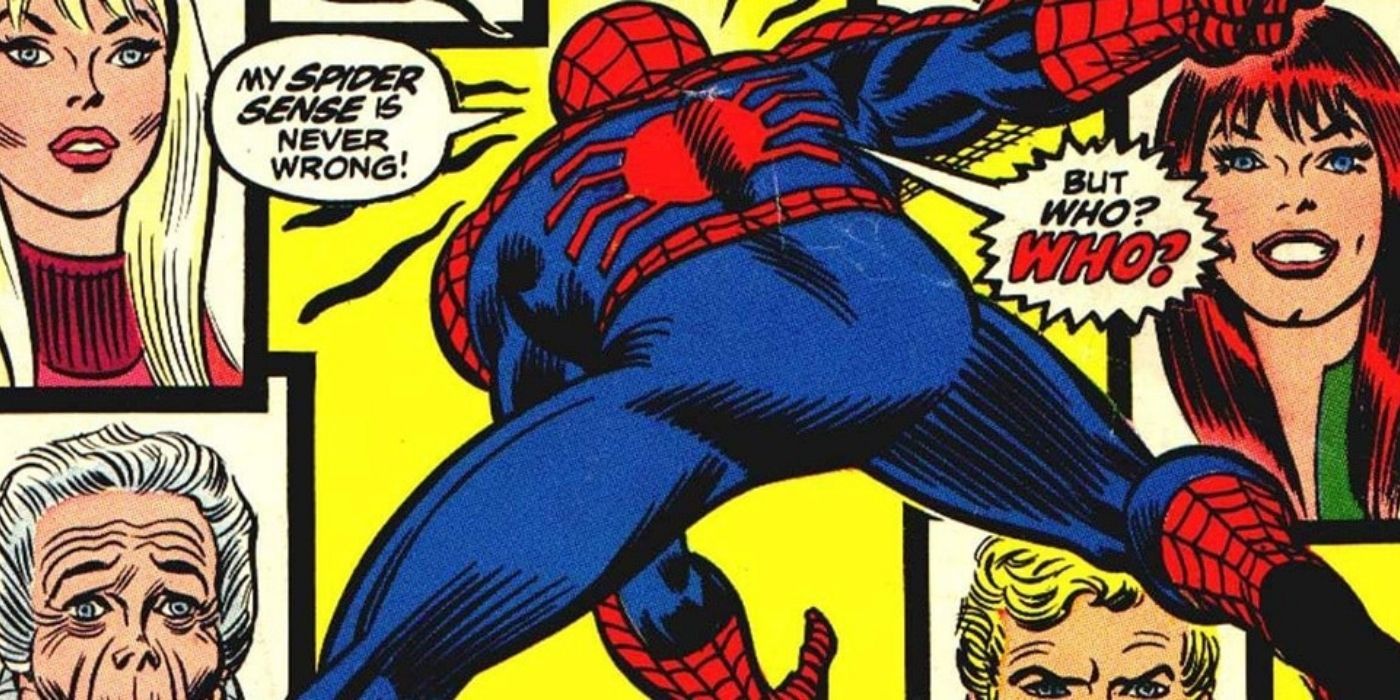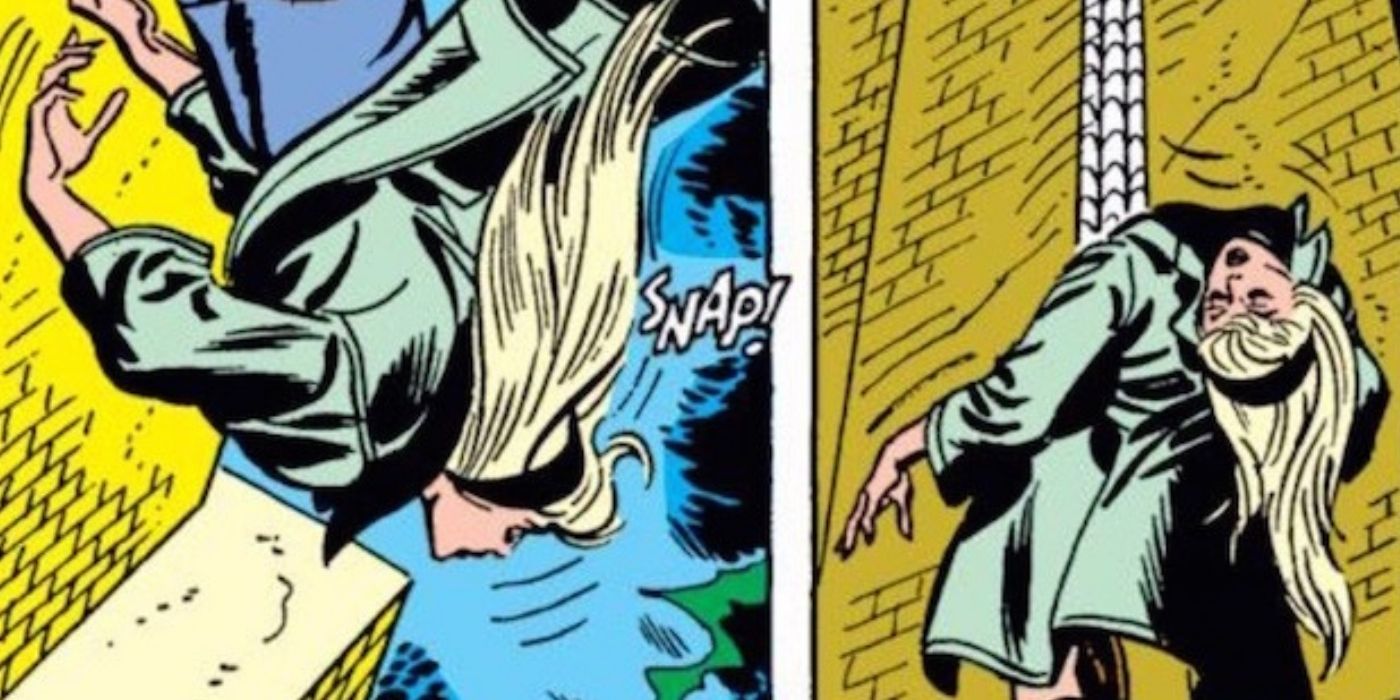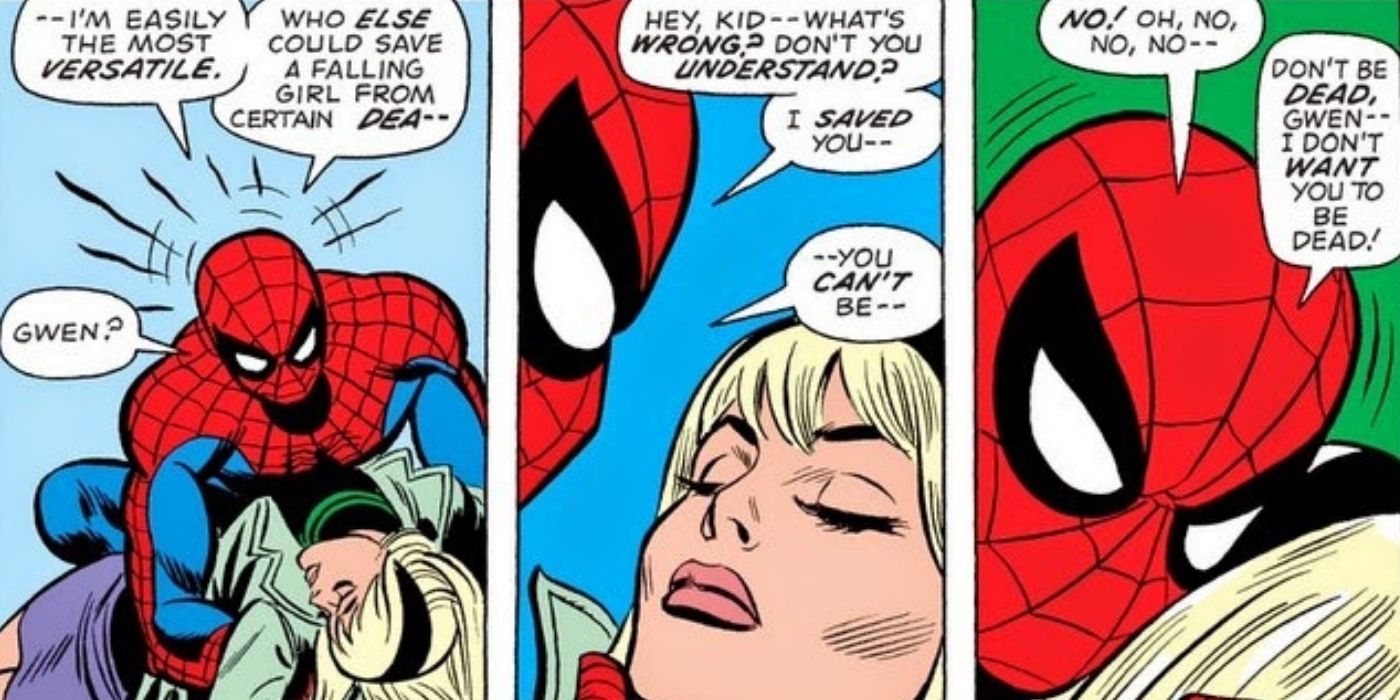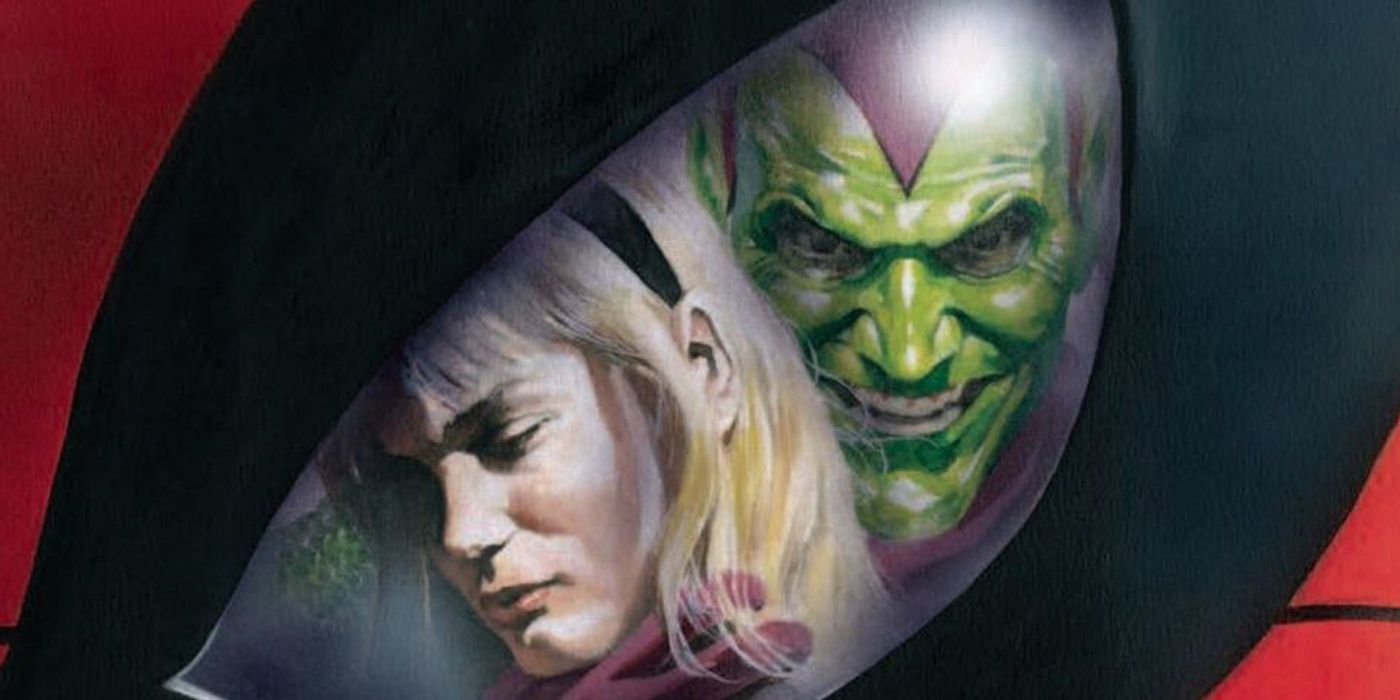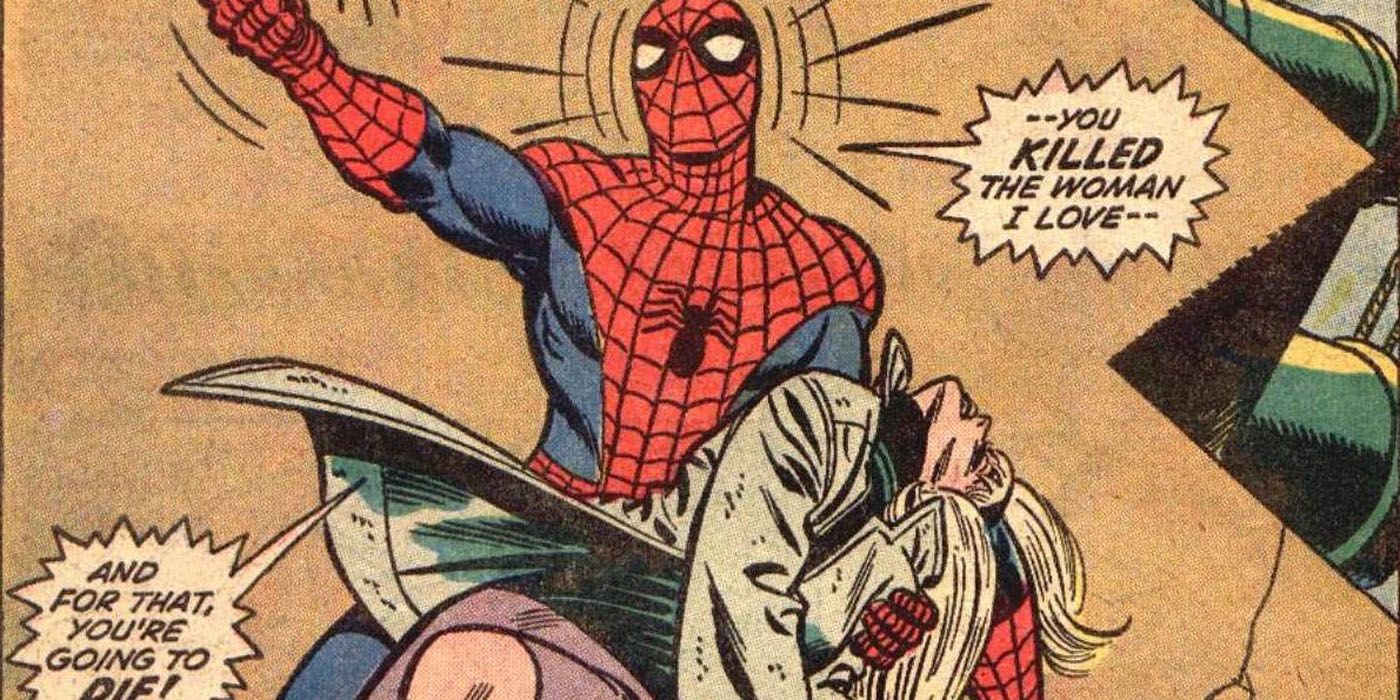In 1973, a Spider-Man storyline shook the comic book world. The friendly neighborhood superhero received yet another traumatizing blow when the Green Goblin, his archnemesis, kidnapped and killed his long-time girlfriend, Gwen Stacy, eleven years into his comic book journey.
The Night Gwen Stacy Died was, and remains, one of Spider-Man's darkest storylines. The event forever changed the hero's life and continued haunting him for years to come. Furthermore, it was a pivotal moment for the comic book industry, signaling the arrival of the darker tone that would define the Bronze Age of comic books.
It Genuinely Shocked Audiences
The Night Gwen Stacy Died cause shock among comic book readers. Fans knew that characters in comics constantly found themselves in dangerous situations, but the protagonist was always there to save them. After all, that was the hero's job, and they only failed during their origin stories before they had their powers.
Audiences were, therefore, in disbelief at her death. Gwen was Peter's love interest, an untouchable and likable character who many readers came to love. In fact, her death provoked a considerable wave of shock, and Marvel received numerous angry letters. One of them even called the company "a pack of soulless, mercenary sadists."
It Immortalized Gwen Stacy
In many ways, Gwen Stacy's legacy relies entirely on her death. Before the pivotal event, Gwen was the ultimate "superhero girlfriend." She existed only to support Peter and hardly had any significant development outside of her relationship with him.
Her death then turned her into the ultimate victim, immortalizing her in the process. She became a saint-like figure in Spider-Man lore, forever existing in a state of perfection. In the minds of fans, Gwen could do no wrong. Recent interpretations of the character - mainly Spider-Gwen and Emma Stone's fan-favorite portrayal in The Amazing Spider-Man series -allow her to have more agency and become a fully-fledged character. However, they still owe a great deal to the original iteration - the Gwen that died so that all future Gwens could live.
It Is Milestone In Spider-Man Comics
Certain events have become synonymous with Spider-Man comics: uncle Ben's death, the arrival of the Venom symbiote, Peter and Mary Jane's predictable wedding, and so on and so forth.
The Night Gwen Stacy Died also has an infamous place in this eventful list. On a "professional" level, it's a decisive moment in Spider-Man's heroic career, representing one of, if not his greatest failure. On a personal one, it represents yet another blow for the hero's life while also opening the door for Peter's future relationship with Mary Jane.
It Introduced A Moral Dilemma
The question remains to this day. Did Gwen Stacy die because she hit the ground or because of the whiplash caused by Spidey's web? No matter the reason, Spider-Man loses both times. However, it's worse if the whiplash was responsible. If Gwen died because she hit the ground, it's definitely a failure for Spider-Man as a hero, but the Green Goblin is solely responsible for her death.
However, if it was the whiplash, then it's actually Spidey himself who killed her, albeit indirectly. Peter's possible involvement in Gwen's death introduced a moral conundrum for comic book readers. Heroes kill all the time, but they only kill bad guys. What happens when they kill a good guy? Are they still heroes, or do they become something else? These questions added unexpected gravitas to Spider-Man's character and would mark the beginning of a more thematically complex time for the entire comic book genre.
It Made Spider-Man Even More Relatable
There's a reason why Spider-Man is the friendly neighborhood superhero. Peter Parker is one of the most relatable superheroes ever; he's not a millionaire or an alien, a world-renowned genius, or a God from Norse mythology. He's a kid from Brooklyn, even after he gets his superpowers.
Furthermore, Gwen Stacy's death showed that he makes mistakes and occasionally fails, just like every other human being. He also grieves and experiences loss, and at times feels inadequate and incapable of performing his duties. At a time when heroes represented ultimate perfection, Spider-Man became something radically different: a human being.
It Confirmed The Green Goblin As Spider-Man's Ultimate Nemesis
Every hero needs an archenemy, a foe that stands above all others. For example, The Joker is Batman's best villain. Superman has Lex Luthor. Flash has Zoom, Captain America has the Red Skull, and Professor X has Magneto. There is some debate about who Spider-Man's archenemy is. Some say it's Doctor Octopus and others think it's Venom. However, the consensus is that the Green Goblin is Spider-Man's ultimate foe, and The Night Gwen Stacy Died supports this.
By kidnapping and (possibly) killing his girlfriend, the Green Goblin takes his rivalry with Spider-Man to another level. It's no longer a fight between a hero and a criminal but a personal clash between two opposing ideologies. The Green Goblin becomes Spider-Man's personal devil, a boogeyman that will forever haunt his dreams.
It Marked A Turning Point For Peter
Peter Parker's life is full of tragedy. From Uncle Ben's murder to Gwen's death, Peter goes through multiple struggles that forever mark his life. Like Uncle Ben's death inspired him to become Spider-Man, Gwen's demise also changes Peter's outlook on life. There's a certain loss of innocence, a departure from his traditional happy-go-lucky persona.
He spends considerable time grieving her loss and takes his time before entering another relationship. In fact, his next romantic entanglement, with Mary Jane Watson, started as a close friendship born out of their mutual grief for Gwen's death.
It Represents The Bronze Age As A Whole
The Bronze Age of comic books is noteworthy for its darker undertones. Many of the most traumatic and shocking storylines in DC and Marvel - A Death in the Family, The Killing Joke, God Loves, Man Kills, Snowbirds Don't Fly - happen during this period. Although there isn't a defined date for the start of the Bronze Age, many consider The Night Gwen Stacy Died as one of the landmark events that would come to define the age as a whole.
The storyline marked a departure for superhero comics, the confirmation that no character was untouchable. No character was safe. The Bronze Age would spread throughout the 70s and early 80s, gravitating toward social issues and more mature subjects than any of the two previous ages. The Night Gwen Stacy Died is, therefore, the perfect example to capture the period's essence. It's a pivotal event that represents one of the darkest times in the life of who is, arguably, Marvel's lightest hero.

